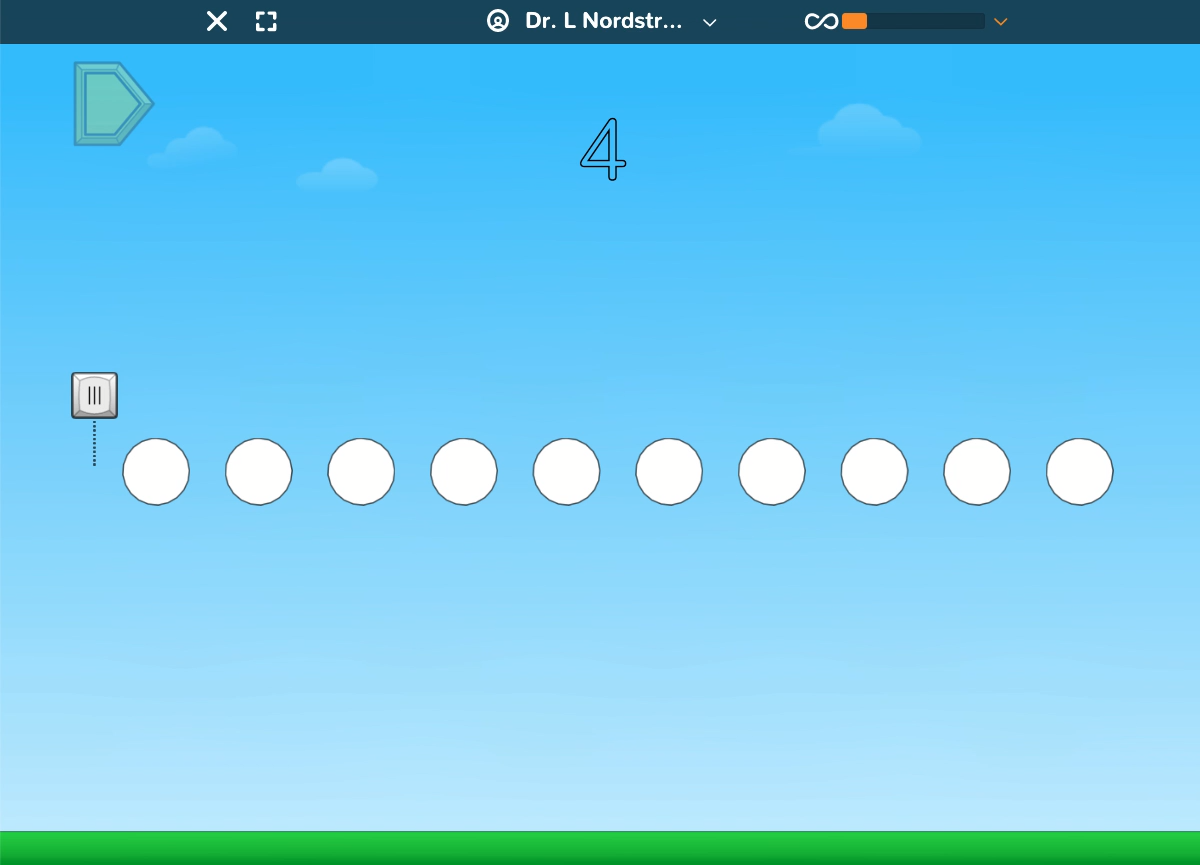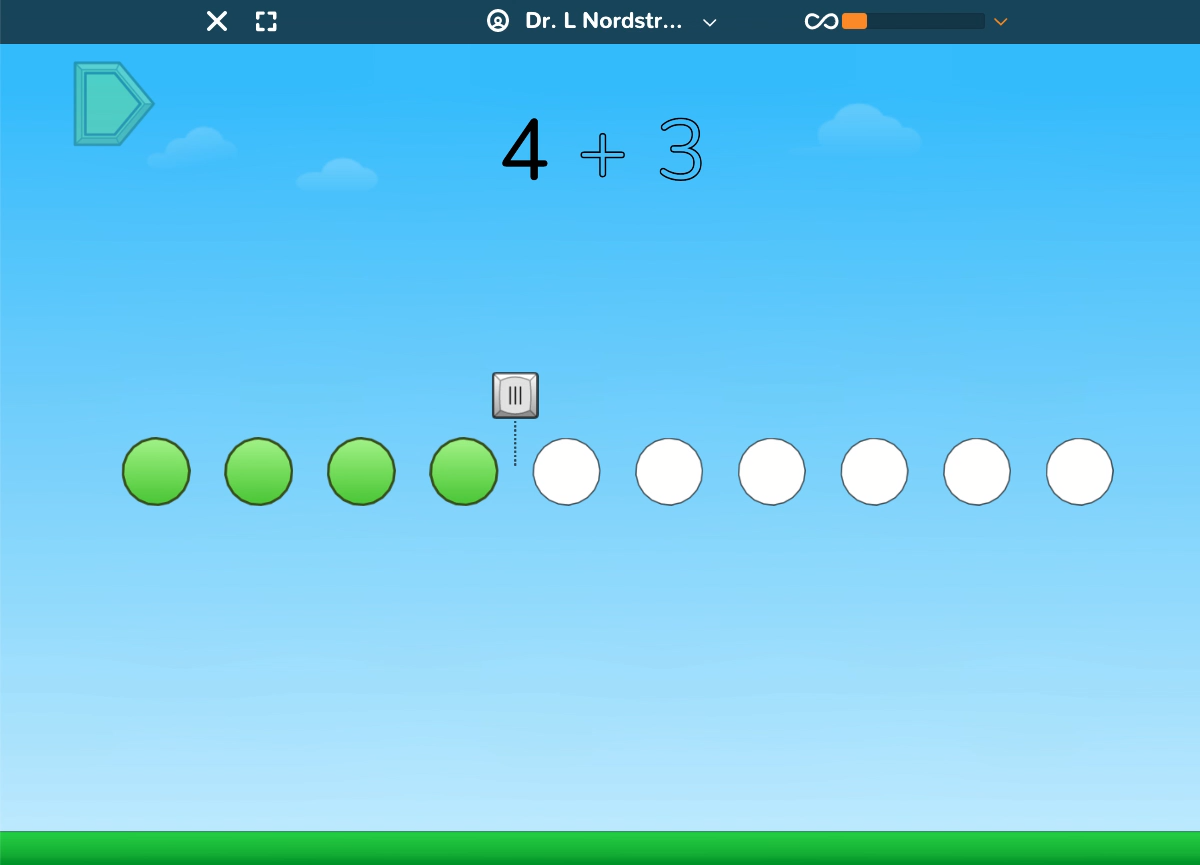ST Math is the product of the neuroscience and education research non-profit MIND Research Institute (learn more in About Us). The approach and design of ST Math is solidly based in the best research of MIND and others in the field and the independent studies support its efficacy.
You'll be able to go into more depth in the Focus On: Neuroscience modules, but for now, here's an introduction to why ST Math is the way it is.
What is the ST in ST Math?
You’ve probably heard the old adage “a picture is worth a thousand words,” right? When conveying information, ideas, and concepts, showing rather than telling can be more efficient and more effective. This is especially true when it comes to mathematics.
Spatial-temporal reasoning involves transforming, relating, and comparing physical and mental images in space and time.
- Spatial: displayed in space
- Temporal: over time
Experience Spatial-Temporal Reasoning
Research tells us three important things about spatial-temporal reasoning
- It is a strong predictor of success at higher levels of mathematics and it connects to mathematics at all levels - from learning to count to calculus.
- It is innate in humans - we all have spatial-temporal reasoning.
- Spatial-temporal reasoning abilities can be increased - even if it is challenging for you now, you can improve with practice.
By challenging students to figure out how to manipulate objects in space and sequence, ST Math helps increase spatial-temporal reasoning and thus improves students’ understanding of math concepts.
Play through this game “Upright JiJi” and think about how you are manipulating JiJi through space and time using spatial-temporal reasoning. There are eight puzzles that get trickier -- be sure to play most of them.
Why is the screen so simple?
When you're working on a problem or learning something new, you have to pay attention. It may be obvious that a squeaky fan, children playing outside your window, or your favorite show on the television in another room can distract you from what you're supposed to be doing.

What you may not realize is that the design of the learning also affects how well you can pay attention. Research on computer-based instruction has helped us understand that decreasing unnecessary visual and auditory elements increases learning whether you're a beginner or an expert.

By limiting what is presented to ST Math students, more of their attention can stay on the task at hand. There aren't monsters dancing or music blaring -- just a visual model of a mathematics concept and a clear task to do. In online instructional design, this is called reducing the cognitive load (BTW it's true for textbooks, too). Our brains can deal with only so much information at one time because our working memory is very limited. ST Math makes sure that it's the math and problem solving that are the focus.

Where are the words?
ST Math’s patented approach employs a unique learning model that leverages the brain's innate spatial-temporal reasoning ability to solve mathematical problems. ST Math begins by teaching the foundational concepts visually, then connects the ideas to mathematical symbols and language.
You can see for yourself how the progression works by moving the gray dot from completely visual through the connecting stages that combine the visual with the symbolic to the completely abstract/symbolic.
The concept begins as a simple counting problem that is later presented as a multiplication problem (3 ostriches and 2 dogs). In later grades, the idea of having 3 ostriches and 2 dogs is related to the symbols of multiplication -- 3 x 2 + 2 x 4. Notice that there is no need for parentheses or a memorized rhyme. It's obvious you have to figure out the number of ostrich shoes and dog shoes before adding all the shoes together. Finally, the images disappear and the problem is represented entirely in symbols. Those symbols, however, are not just a bunch of squiggles that require memorization. They are meaningful symbols that represent a problem that can be easily solved.
Learn more at Learn About: Where are the Words?
Why is the feedback so important?
The individualized feedback on every puzzle is vital to the success of ST Math.
Think about the difference between writing something on a word processor and getting immediate feedback on your spelling vs. writing something and submitting it to an instructor who gives it back a week later with all your spelling mistakes marked with red pen. Which is probably going to help you improve your spelling and keep your attitude positive?
The reason why getting feedback right away is so powerful is because of the perception-action cycle. ST Math uses it to increase learning but you can use the approach with any subject -- even recess! The individualized feedback on every puzzle is vital to the success of ST Math.
Think about the difference between writing something on a word processor and getting immediate feedback on your spelling vs. writing something and submitting it to an instructor who gives it back a week later with all your spelling mistakes marked with red pen. Which is probably going to help you improve your spelling and keep your attitude positive?
The reason why getting feedback right away is so powerful is because of the perception-action cycle. ST Math uses it to increase learning but you can use the approach with any subject -- even recess!
